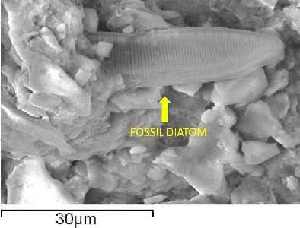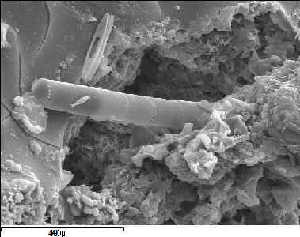What'sNEW January - March 2013
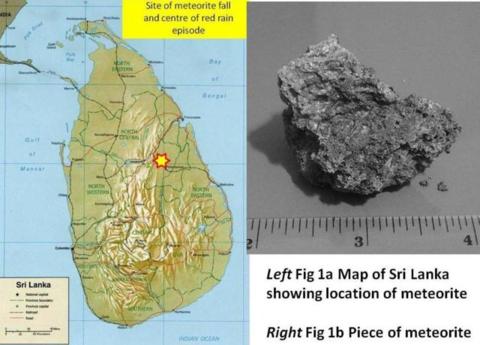 The world is beginning to notice the evidence for life in the Polonnaruwa meteorite. The latest paper about it is now posted on arxiv.com. Students and other bloggers are commenting furiously (see typical blogs linked below.) Many of their complaints deal with who the scientists are and where they have published the evidence, and not the actual evidence. Too bad. But at least people are taking notice.
The world is beginning to notice the evidence for life in the Polonnaruwa meteorite. The latest paper about it is now posted on arxiv.com. Students and other bloggers are commenting furiously (see typical blogs linked below.) Many of their complaints deal with who the scientists are and where they have published the evidence, and not the actual evidence. Too bad. But at least people are taking notice.Some comments include imaginative proposals to rebut the basic conclusion from Jamie Wallis et al. For example: even if the stones are meteorites, and even if they contain biological fossils that are too old to be recent earthly contaminants, still, maybe, somehow old earthly fossils got incorporated into the new meteorite! For another example: maybe the stones recovered were not the ones seen when the meteorite fell. Of course, this objection also could be made for any other witnessed meteorite, such as the one that fell spectacularly, 15 February, over Chelyabinsk, Russia. It isn't, but the point is not crucial anyway. The important question is this: are the actual biological fossils themselves unearthly? Preliminary indications say yes.
 Jamie Wallis, Nori Miyake, Richard B. Hoover, Andrew Oldroyd, Daryl H. Wallis, Anil Samaranayake, K. Wickramarathne, M.K. Wallis, Carl H. Gibson, N. C. Wickramasinghe, "The Polonnaruwa meteorite: oxygen isotope, crystalline and biological composition" [abstract | PDF], arXiv:1303.1845 [q-bio.OT], posted 6 Mar 2013. Jamie Wallis, Nori Miyake, Richard B. Hoover, Andrew Oldroyd, Daryl H. Wallis, Anil Samaranayake, K. Wickramarathne, M.K. Wallis, Carl H. Gibson, N. C. Wickramasinghe, "The Polonnaruwa meteorite: oxygen isotope, crystalline and biological composition" [abstract | PDF], arXiv:1303.1845 [q-bio.OT], posted 6 Mar 2013.
 Astrobiologists Find Ancient Fossils in Fireball Fragments, MIT Technology Review, 11 Mar 2013. Astrobiologists Find Ancient Fossils in Fireball Fragments, MIT Technology Review, 11 Mar 2013.
 Astrobiologists discover fossils in meteorite fragments, confirming extraterrestrial life, ExtremeTech, 11 Mar 2013. Astrobiologists discover fossils in meteorite fragments, confirming extraterrestrial life, ExtremeTech, 11 Mar 2013.
 Claims Of A Meteorite's Ancient Aquatic Fossils Spark Debate by Bill Chappell, NPR, 11 Mar 2013. Claims Of A Meteorite's Ancient Aquatic Fossils Spark Debate by Bill Chappell, NPR, 11 Mar 2013.
 Astrobiologists claim meteorite carried space algae by Marcia Malory, PhysOrg.com, 12 Mar 2013. Astrobiologists claim meteorite carried space algae by Marcia Malory, PhysOrg.com, 12 Mar 2013.
 Algae Fossils Were Embedded In Sri Lanka Meteorite... by Lee Speigel, Huffington Post, 14 Mar 2013. Algae Fossils Were Embedded In Sri Lanka Meteorite... by Lee Speigel, Huffington Post, 14 Mar 2013.
 Thanks for pointing us to these and other blogs, Mike Peabody and Google Alerts. Thanks for pointing us to these and other blogs, Mike Peabody and Google Alerts.
 13 Mar 2013: Brig Klyce comments to Chandra Wickramasinghe and Richard Hoover. 13 Mar 2013: Brig Klyce comments to Chandra Wickramasinghe and Richard Hoover.
 NASA Rover Finds Conditions Once Suited for Ancient Life on Mars, NASA, 12 Mar 2013. NASA Rover Finds Conditions Once Suited for Ancient Life on Mars, NASA, 12 Mar 2013.
 Life on Mars! is the main related local webpage. Life on Mars! is the main related local webpage.
 Thanks for alerts, Ellen Klyce, Stan Franklin, Ronnie McGhee and NPR. And David S. McKay! Thanks for alerts, Ellen Klyce, Stan Franklin, Ronnie McGhee and NPR. And David S. McKay!
 David S. McKay died on February 20th. David was a geologist at NASA who ultimately examined more moon rocks than anyone else in the world. He is best known for his team's 1996 finding of evidence for past life on Mars in a meteorite designated ALH84001. Although this evidence did not reach general acceptance during his lifetime, he continued to investigate and report his related findings with integrity and good will. He was a mentor and valued friend to us.
David S. McKay died on February 20th. David was a geologist at NASA who ultimately examined more moon rocks than anyone else in the world. He is best known for his team's 1996 finding of evidence for past life on Mars in a meteorite designated ALH84001. Although this evidence did not reach general acceptance during his lifetime, he continued to investigate and report his related findings with integrity and good will. He was a mentor and valued friend to us.
 David S. McKay, biographic page at Wikipedia. David S. McKay, biographic page at Wikipedia.
 Life on Mars! is our webpage inspired mainly by McKay et al.'s 1996 paper. Life on Mars! is our webpage inspired mainly by McKay et al.'s 1996 paper.
 Life on Mars is the subject of email from David McKay, 11 Dec 2009. Life on Mars is the subject of email from David McKay, 11 Dec 2009.
 Thanks for notifying us, Richard Hoover. Thanks for notifying us, Richard Hoover.
 Antarctic Lake Vostok yields 'new bacterial life' by Paul Rincon, BBC, 7 Mar 2013. Antarctic Lake Vostok yields 'new bacterial life' by Paul Rincon, BBC, 7 Mar 2013.
 'Unclassified' Life Found in Antarctic Lake..., RIA Novosti, 7 Mar 2013. 'Unclassified' Life Found in Antarctic Lake..., RIA Novosti, 7 Mar 2013.
 Life on Europa, Other Moons, Other Planets? has related links. Life on Europa, Other Moons, Other Planets? has related links.
 Thanks, Bob Sweeney. Thanks, Bob Sweeney.
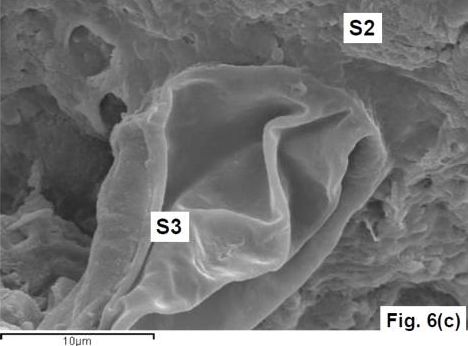 Chemical analysis of apparent biological fossils in the Polonnaruwa meteorite, and a measurement of the oxygen isotopes in it are now available. The accompanying photo from the linked article shows a detail of a highly carbonaceous embedded fossilized filament of a likely cyanobacteria. It is attached to a complex, thick-walled, kerogenous microfossil tentatively identified as a hystrichosphere, "thought to be associated with the resting stages of a group of largely extinct marine dinoflagellate algae." Additional photos in the linked article and earlier ones also show fossilized diatoms in samples of Polonnaruwa.
Chemical analysis of apparent biological fossils in the Polonnaruwa meteorite, and a measurement of the oxygen isotopes in it are now available. The accompanying photo from the linked article shows a detail of a highly carbonaceous embedded fossilized filament of a likely cyanobacteria. It is attached to a complex, thick-walled, kerogenous microfossil tentatively identified as a hystrichosphere, "thought to be associated with the resting stages of a group of largely extinct marine dinoflagellate algae." Additional photos in the linked article and earlier ones also show fossilized diatoms in samples of Polonnaruwa."...Lack of detectable nitrogen and an anomalous C/O ratio (similar to bitumen)" show that these fossils can hardly be recent contaminants. The case for panspermia is looking stronger than ever.
 Jamie Wallis, Nori Miyake, Richard B. Hoover, Andrew Oldroyd, Daryl H. Wallis, Anil Samaranayake, K. Wickramarathne, M.K. Wallis, Carl H. Gibson and N. C. Wickramasinghe, "The Polonnaruwa Meteorite: Oxygen Isotope, Crystalline and Biological Composition" [local PDF | arXiv abstract], n2 v22 Journal of Cosmology, online 5 Mar 2013. Jamie Wallis, Nori Miyake, Richard B. Hoover, Andrew Oldroyd, Daryl H. Wallis, Anil Samaranayake, K. Wickramarathne, M.K. Wallis, Carl H. Gibson and N. C. Wickramasinghe, "The Polonnaruwa Meteorite: Oxygen Isotope, Crystalline and Biological Composition" [local PDF | arXiv abstract], n2 v22 Journal of Cosmology, online 5 Mar 2013.
 N. C. Wickramasinghe et al., "Incidence of Low Density Meteoroids of the Polonnaruwa-type " [local PDF], n1 v22 Journal of Cosmology, online 4 Mar 2013. N. C. Wickramasinghe et al., "Incidence of Low Density Meteoroids of the Polonnaruwa-type " [local PDF], n1 v22 Journal of Cosmology, online 4 Mar 2013.
 Thanks for careful proofreading, Theodore Rigley. Thanks for careful proofreading, Theodore Rigley.
Deep below ground some microbes may "live without dividing for millions to tens of millions of years."
 Deep Underground, Worms and 'Zombie Microbes' Rule, book review by Alister Doyle, ScientificAmerican.com, 5 Mar 2013. Deep Underground, Worms and 'Zombie Microbes' Rule, book review by Alister Doyle, ScientificAmerican.com, 5 Mar 2013.
 Thanks for an alert, Theodore Rigley. Thanks for an alert, Theodore Rigley.
 Bacteria... is a related local webpage. Bacteria... is a related local webpage.
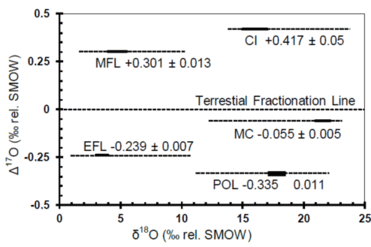 A fragment gathered in Sri Lanka after the fall of the Polonnaruwa meteorite has unearthly isotope ratios, according to an analysis performed at the University of Göttingen last week. The figure shows the Δ17O / Δ18O fractionation range for this sample (POL), along with those of achondritic stony meteorites (EFL), Meta-C chondrites (MC), Mars meteorites (MFL) and ordinary chondrites (CI). This information should help to dispense the objection that Polonnaruwa was not a meteorite. A paper to accompany the isotope analysis is forthcoming. (Polonnaruwa fell on 29 December 2012. The diatoms it contains are clearly biological. Please stay tuned!)
A fragment gathered in Sri Lanka after the fall of the Polonnaruwa meteorite has unearthly isotope ratios, according to an analysis performed at the University of Göttingen last week. The figure shows the Δ17O / Δ18O fractionation range for this sample (POL), along with those of achondritic stony meteorites (EFL), Meta-C chondrites (MC), Mars meteorites (MFL) and ordinary chondrites (CI). This information should help to dispense the objection that Polonnaruwa was not a meteorite. A paper to accompany the isotope analysis is forthcoming. (Polonnaruwa fell on 29 December 2012. The diatoms it contains are clearly biological. Please stay tuned!)
 Thanks for careful proofreading, Theodore Rigley. Thanks for careful proofreading, Theodore Rigley.
We discovered massive transfers of a DNA transposon, a Tc1 element encoding a transposase, between multiple teleost fishes and lampreys that last shared a common ancestor over 500 Ma. Apparently, Horizontal Gene Transfer (HGT) among eukaryotes is not rare.
 Kuraku S, Qiu H, Meyer A, "Horizontal transfers of Tc1 elements between teleost fishes and their vertebrate parasites, lampreys" [open access abstract], doi:10.1093/gbe/evs069, p929-936 v4, Genome Biol Evol, online 9 Aug 2012. Kuraku S, Qiu H, Meyer A, "Horizontal transfers of Tc1 elements between teleost fishes and their vertebrate parasites, lampreys" [open access abstract], doi:10.1093/gbe/evs069, p929-936 v4, Genome Biol Evol, online 9 Aug 2012.
 Viruses and Other Gene Transfer Mechanisms is a related local webpage — What'sNEW about HGT Viruses and Other Gene Transfer Mechanisms is a related local webpage — What'sNEW about HGT  | |
 Thanks for alerting us, Sascha Wageringel. Thanks for alerting us, Sascha Wageringel.
 Viruses are notorious for their role in disease, but only about 1% are actually pathogenic. What are all those other viruses doing?
Viruses are notorious for their role in disease, but only about 1% are actually pathogenic. What are all those other viruses doing?
 "Are There Good Viruses?" [link expired] by Sarah Crespi, ScienceNow, 15 Feb 2013. "Are There Good Viruses?" [link expired] by Sarah Crespi, ScienceNow, 15 Feb 2013.
 Viruses and Other Gene Transfer Mechanisms is a related local webpage — What'sNEW about HGT Viruses and Other Gene Transfer Mechanisms is a related local webpage — What'sNEW about HGT  | |
 N.C. Wickramasinghe et al., "Living Diatoms in the Polonnaruwa Meteorite – Possible Link to Red and Yellow Rain", v21 n40, Journal of Cosmology, 8 Feb 2013. N.C. Wickramasinghe et al., "Living Diatoms in the Polonnaruwa Meteorite – Possible Link to Red and Yellow Rain", v21 n40, Journal of Cosmology, 8 Feb 2013.
 Anil Samaranayake et al., "Microorganisms in the Colored Rain of Sri Lanka", v22 n1, JoC, 13 Feb 2013. Anil Samaranayake et al., "Microorganisms in the Colored Rain of Sri Lanka", v22 n1, JoC, 13 Feb 2013.
Thomas Nagel questions the adequacy of neo-darwinan evolution, and scientific materialism (or "reductionism") in general, to explain the origin of life and the evolution of consciousness. Evolution by the standard method seems unlikely to him, and he specifically doubts that consciousness could evolve as usually supposed. Thinking beyond today's norms, Nagel suggests that science may need to incorporate some kind of fundamental teleology to make the facts fit together. He is a respected, atheistic philosopher, but his arguments give comfort to proponents of creationism/ID:
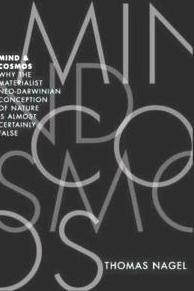
As I have said, doubts about the reductionist account of life go against the dominant scientific consensus, but that consensus faces problems of probability that I believe are not taken seriously enough, both with respect to the evolution of life forms through accidental mutation and natural selection and with respect to the formation from dead matter of physical systems capable of such evolution. The more we learn about the intricacy of the genetic code and its control of the chemical processes of life, the harder those problems seem.
For giving comfort to "the enemy" Nagel is catching hell from many orthodox scientists. Meanwhile, in cosmic ancestry, the prior existence of genetic programs for all of life would make the story of evolution far less unlikely than the strictly darwinian account — and it would have an appearance of teleolgy. We wonder if this concept would interest Nagel. With sufficient genetic programs, could even consciousness be an emergent property of advanced life? If so, scientific materialism might be adequate after all.
 Thomas Nagel, Mind and Cosmos: Why the Materialist Neo-Darwinian Conception of Nature Is Almost Certainly False [publisher's promo], ISBN10: 0199919755, Oxford University Press, USA, 26 Sep 2012. Thomas Nagel, Mind and Cosmos: Why the Materialist Neo-Darwinian Conception of Nature Is Almost Certainly False [publisher's promo], ISBN10: 0199919755, Oxford University Press, USA, 26 Sep 2012.
 Jennifer Schuessler, "An Author Attracts Unlikely Allies" [html], The New York Times, 6 Feb 2012. Jennifer Schuessler, "An Author Attracts Unlikely Allies" [html], The New York Times, 6 Feb 2012.
 Kristina Musholt, "A Flawed Challenge Worth Pondering" [abstract], p1277 v339, Science, 15 Mar 2012. Kristina Musholt, "A Flawed Challenge Worth Pondering" [abstract], p1277 v339, Science, 15 Mar 2012.
 Comparing Darwinism, Creationism/ID and Cosmic Ancestry is a related local webpage. Comparing Darwinism, Creationism/ID and Cosmic Ancestry is a related local webpage.
 Evolution versus Creationism is the main related local webpage. Evolution versus Creationism is the main related local webpage.
 The RNA World and Other Origin-of-Life Theories has lots about the difficult problems. The RNA World and Other Origin-of-Life Theories has lots about the difficult problems.
 Thanks for recommendations, Stan Franklin and Bob Sweeney. Thanks for recommendations, Stan Franklin and Bob Sweeney.
 Lake-drilling team discovers life under the ice, by Quirin Schiermeier, Nature News, 11 Feb 2013. Lake-drilling team discovers life under the ice, by Quirin Schiermeier, Nature News, 11 Feb 2013.
 ...First Evidence of Life Under Antarctic Ice by Carolyn Gramling, Science Now, 7 Feb 2013. ...First Evidence of Life Under Antarctic Ice by Carolyn Gramling, Science Now, 7 Feb 2013.
 Buried Antarctic Lake Yields Hints of Life by Becky Oskin, OurAmazingPlanet (+Fox News, +NBC News), 30 Jan 2013. Buried Antarctic Lake Yields Hints of Life by Becky Oskin, OurAmazingPlanet (+Fox News, +NBC News), 30 Jan 2013.
 Life on Europa, Other Moons, Other Planets? has related links. Life on Europa, Other Moons, Other Planets? has related links.
 Thanks, Ronnie McGhee. Thanks, Ronnie McGhee.
Chandra Wickramasinghe et al. consider two challenges concerning the Polonnaruwa meteorite. The first is that the stones are not meteorites at all, but fulgurites — hollow tubes of soil fused by groundstrikes of lightning. Like fulgurites, the stones contain quartz, but so do other meteorites. All other evidence and eye-witness reports say they are meteorites. Chemical analysis indicates that they are fragments of a carbonaceous meteorite, but in a category not previously described. (One of the stones examined for this analysis "fell onto a roof.")
The second challenge is that the microbes in the meteorite are Earthly contaminants. This is especially plausible because some of them closely resemble earthly species (and, in one report, some initially appeared to be alive.) The final answer for this challenge must await further testing including chemical and isotopic analysis of the fossils (diatoms, cyanobacteria and other, unrecognized species) and other parts of the meteorite. Meanwhile, some of the fossils are embedded in the rock matrix — hard to explain away with recent contamination. An example, a fractured diatom fossil, is shown above (picture width = c. 16 μ.)
In cosmic ancestry, life from space would be closely related to life on Earth and would necessarily sometimes arrive intact — alive.
 N.C. Wickramasinghe et al., "Authenticity of the Life-Bearing Polonnaruwa Meteorite," n39 v21, Journal of Cosmology [local PDF], 4 Feb 2013. N.C. Wickramasinghe et al., "Authenticity of the Life-Bearing Polonnaruwa Meteorite," n39 v21, Journal of Cosmology [local PDF], 4 Feb 2013.
A drill team in Antarctica has reached Lake Whillans, a subglacial lake of c. 60 square kilometers under 800 meters of ice. Some 300 such lakes have been discovered, many of them buried for millions of years. Any life found in them would make life in dark, ice-covered oceans on, say, Europa, seem plausible. Results from Whillans should come soon.
 Antarctic lake mission reports historic breakthrough by Quirin Schiermeier, Nature News Blog, 28 Jan 2013. Antarctic lake mission reports historic breakthrough by Quirin Schiermeier, Nature News Blog, 28 Jan 2013.
 Life on Europa, Other Moons, Other Planets? has related links. Life on Europa, Other Moons, Other Planets? has related links.  Updates, 7-11 Feb 2013 Updates, 7-11 Feb 2013
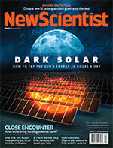 Many of our genes have no obvious relatives or evolutionary history. So where did they come from? These are the opening sentences of a review by Helen Pilcher about "orphan genes," the ones that seem to have come from nowhere. When they were first noticed, they were considered anomalies whose provenance would become apparent as more genomes were sequenced. That has not happened. The number of them has continued to grow, and they comprise about a third of all genes, even now. Everyone assumed that as we learned more, we would discover what had happened to their families. But we haven't – quite the opposite, in fact.... As the genomes of more and more organisms were sequenced, genetic family reunions proved to be the exception rather than the rule.
Many of our genes have no obvious relatives or evolutionary history. So where did they come from? These are the opening sentences of a review by Helen Pilcher about "orphan genes," the ones that seem to have come from nowhere. When they were first noticed, they were considered anomalies whose provenance would become apparent as more genomes were sequenced. That has not happened. The number of them has continued to grow, and they comprise about a third of all genes, even now. Everyone assumed that as we learned more, we would discover what had happened to their families. But we haven't – quite the opposite, in fact.... As the genomes of more and more organisms were sequenced, genetic family reunions proved to be the exception rather than the rule.
Yet many orphan genes have important functions; ...a few even seem have played a part in the evolution of the human brain. Important, functional genes with no history of gradual, step-wise composition are not explained by mainstream Darwinism.
Now genomic researchers are finding that close homologs of many orphan genes can be found in silent, or "junk" DNA among species including yeast, rice, mice and fruit flies. When these sequences are activated in more advanced species, they are designated de novo genes. Of course, how unexpressed sequences of hundreds or thousands of nucleotides acquired their programmatic meaning de novo is the issue we just mentioned. The genes remain unexplained by mainstream Darwinism.
Orphan genes are a basic prediction of cosmic ancestry.
 Helen Pilcher, "Genes from nowhere: Orphans with a surprising story" [html], p40-43 n2900, New Scientist, 24 Jan 2013. Helen Pilcher, "Genes from nowhere: Orphans with a surprising story" [html], p40-43 n2900, New Scientist, 24 Jan 2013.
 Diethard Tautz & Tomislav Domazet-Lošo, "The evolutionary origin of orphan genes" [abstract], doi:10.1038/nrg3053, p692-702 v12, Nature Reviews Genetics, Oct 2011. Diethard Tautz & Tomislav Domazet-Lošo, "The evolutionary origin of orphan genes" [abstract], doi:10.1038/nrg3053, p692-702 v12, Nature Reviews Genetics, Oct 2011.
 Anne-Ruxandra Carvunis et al., "Proto-genes and de novo gene birth" [abstract], doi:10.1038/nature11184, p370-374 v487, Nature, 24 Jun 2012. Anne-Ruxandra Carvunis et al., "Proto-genes and de novo gene birth" [abstract], doi:10.1038/nature11184, p370-374 v487, Nature, 24 Jun 2012.
 New genetic programs in Darwinism and strong panspermia includes our prediction of orphan genes. New genetic programs in Darwinism and strong panspermia includes our prediction of orphan genes.
 Three New Human Genes references the same research Pilcher does (Knowles & McLysaght, 2009). Three New Human Genes references the same research Pilcher does (Knowles & McLysaght, 2009).
 Conserved Non-Genic Sequences is a related local webpage. Conserved Non-Genic Sequences is a related local webpage.
 Is Sustained Macroevolutionary Progress Possible? is a related local webpage. Is Sustained Macroevolutionary Progress Possible? is a related local webpage.
 Genes Older Than Earth? is a possibly related local webpage. Genes Older Than Earth? is a possibly related local webpage.
 Thanks for the pointer, Theodore Rigley. Thanks for the pointer, Theodore Rigley.
Investigation of the Polonnaruwa meteorite continues in Cardiff. Richard Hoover joins Chandra Wickramasinghe and his team at Buckingham Center for AstroBiology (BCAB); they are finding exciting evidence including familiar and unfamiliar biological structures. The investigation will ultimately include chemical and isotopic analysis of the meteorite and the fossils it contains.Meanwhile, last Thursday, 17 January, your correspondent visited The Marshall Space Flight Center in Huntsville, AL, where (near to far) Hoover, SEM operator Greg Jerman, and I studied an especially interesting apparent fossil in the just-opened interior of one sample.
 Fossilized Life Forms in the Murchison Meteorite is our oldest related webpage, with links to more articles about meteoritic research, beginning 29 Jan 1997. Fossilized Life Forms in the Murchison Meteorite is our oldest related webpage, with links to more articles about meteoritic research, beginning 29 Jan 1997.
 Fossilized bacteria in meteorites are obvious — fossilized cyanobacteria in another meteorite, 3 Mar 2011. Fossilized bacteria in meteorites are obvious — fossilized cyanobacteria in another meteorite, 3 Mar 2011.
"Bad Astronomy" doubts the diatoms in Polonnaruwa and Chandra Wickramasinghe responds. We advise calm and patience. Yesterday, at the Marshall Space Flght Center, we saw a sample of the meteorite and we saw the diatoms. We expect a full report to remove the doubts and clarify any remaining questions. Meanwhile, a blog-war before the full evidence is gathered and presented will only distract us from science.
 No, Diatoms Have Not Been Found in a Meteorite by Phil Plait, Slate, 15 Jan 2013. No, Diatoms Have Not Been Found in a Meteorite by Phil Plait, Slate, 15 Jan 2013.
 Extraterresterial Life Exists, Scientist Chandra Wickramasinghe Claims by Lee Speigel, TheHuffingtonPost.com, 18 Jan 2013. Extraterresterial Life Exists, Scientist Chandra Wickramasinghe Claims by Lee Speigel, TheHuffingtonPost.com, 18 Jan 2013.
An early TV news report of the Polonnaruwa meteorite includes an interview with Dr. Sarath Gunapala of NASA, JPL; and video of villagers in their fields where fragments of the meteorite fell.
 Meteorite particles in Polonnaruwa?, 1.3-minute video, Newsfirst Sri Lanka (+YouTube), 31 Dec 2012.
Portions of Richard Hoover's video interview with NewsFirst of Sri Lanka are available online, along with a counter-opinion from Geologist Rohana Chandrajith at the University of Peradeniya. Meteorite particles in Polonnaruwa?, 1.3-minute video, Newsfirst Sri Lanka (+YouTube), 31 Dec 2012.
Portions of Richard Hoover's video interview with NewsFirst of Sri Lanka are available online, along with a counter-opinion from Geologist Rohana Chandrajith at the University of Peradeniya.
 Professor Richard B. Hoover on meteorites found in Aralaganwila, News First (+YouTube), c. 16 Jan 2013. Professor Richard B. Hoover on meteorites found in Aralaganwila, News First (+YouTube), c. 16 Jan 2013.
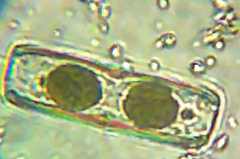 More about the Polonnaruwa meteorite: Among many surprises, it is even more porous than ordinary carbonaceous meteorites. Although diatoms in meteorites are still controversial, Hoyle and Wickramasinghe saw evidence for silicates in interstellar dust thirty years ago.
Wickramasinghe et al. conclude, If this result is confirmed in future studies and contamination is excluded, the meteorite would have been shown to contain both fossil as well as living microbes [right], and panspermia thus demonstrated in real time. (Contamination has been excluded for the fossilized, not the living diatoms.)
More about the Polonnaruwa meteorite: Among many surprises, it is even more porous than ordinary carbonaceous meteorites. Although diatoms in meteorites are still controversial, Hoyle and Wickramasinghe saw evidence for silicates in interstellar dust thirty years ago.
Wickramasinghe et al. conclude, If this result is confirmed in future studies and contamination is excluded, the meteorite would have been shown to contain both fossil as well as living microbes [right], and panspermia thus demonstrated in real time. (Contamination has been excluded for the fossilized, not the living diatoms.)
 N.C. Wickramasinghe et al., "On the Cometary Origin of the Polonnaruwa Meteorite," n38 v21, Journal of Cosmology [local PDF], online 13 Jan 2013. N.C. Wickramasinghe et al., "On the Cometary Origin of the Polonnaruwa Meteorite," n38 v21, Journal of Cosmology [local PDF], online 13 Jan 2013.
Chandra Wickramasinghe talks about the Polonnaruwa meteorite on Sri Lankan television. Some of the diatoms appear to be, not fossilized, but alive! (Not independently confirmed.)
 Algae in meteorite prove life in comets (2-minute video), Newsfirst Sri Lanka (+YouTube), 12 Jan 2013. Algae in meteorite prove life in comets (2-minute video), Newsfirst Sri Lanka (+YouTube), 12 Jan 2013.
 Polonnaruwa Meteorite with Evidence of Life from Outer Space Described the Most Important Find in 500 Years by Walter Jayawardhana, LankaWeb (+LankaNewspapers.com), 13 Jan 2013. Polonnaruwa Meteorite with Evidence of Life from Outer Space Described the Most Important Find in 500 Years by Walter Jayawardhana, LankaWeb (+LankaNewspapers.com), 13 Jan 2013.
 Thanks, Jack Foster, iii. Thanks, Jack Foster, iii.
| 11 January 2013 | about Polonnaruwa - later  |
A carbonaceous meteorite that fell in Sri Lanka on December 29 contains fossilized diatoms. This observation comes in an online report by UK astrobiologists Chandra Wickramasinghe, Daryl H. Wallis and Jamie Wallis; and Anil Samaranayake of the Medical Research Institute, Colombo, Sri Lanka. The meteorite has been designated the Polonnaruwa meteorite, for the historic ancient city near which it fell. The fossils are unmistakably diatoms, but their chemical composition is so similar to that of the meteoritic matrix that they can hardly be Earthly contaminants only a few days old.
Diatoms are easy to recognize because of their unique, articulated, perforated, geometric shapes. They grow in water or wet environments almost anywhere photosynthesis is possible. The cell walls are mostly rigid, brittle silica. (Larger versions of the figures here are available in the article linked below.)
The SEM images, made at the School of Earth Sciences at Cardiff University, also show round cells similar in size and shape to those found in the "red rain" that fell in Kerala, India, in 2001. The source of these cells is not clear.
But the diatoms are easily identified and clearly part of the meteorite. While this evidence is new, and therefore not yet widely accepted, it seems conclusive to us — it looks like life from space. Chandra Wickramasinghe has pioneered the theory of cometary panspermia for decades. We would expect this evidence from his group to advance the theory considerably.
 N.C. Wickramasinghe, J. Wallis, D.H. Wallis and Anil Samaranayake, "Fossil Diatoms in a New Carbonaceous Meteorite," n37 v21, Journal of Cosmology [PDF | local PDF], online 10 Jan 2013. N.C. Wickramasinghe, J. Wallis, D.H. Wallis and Anil Samaranayake, "Fossil Diatoms in a New Carbonaceous Meteorite," n37 v21, Journal of Cosmology [PDF | local PDF], online 10 Jan 2013.
 Chandra Wickramasinghe, coincidentally, is originally from Sri Lanka. Chandra Wickramasinghe, coincidentally, is originally from Sri Lanka.
 Jamie Hamilton Wallis, Evidence of Panspermia: From Astronomy to Meteorites (20 Mb pdf), PhD Thesis at Cardiff University, 2014. Jamie Hamilton Wallis, Evidence of Panspermia: From Astronomy to Meteorites (20 Mb pdf), PhD Thesis at Cardiff University, 2014.
 Milton Wainwright and Chandra Wickramasinghe, Polonnaruwa Stones Revisited – Evidence for Non-Terrestrial Life, May 2021. Milton Wainwright and Chandra Wickramasinghe, Polonnaruwa Stones Revisited – Evidence for Non-Terrestrial Life, May 2021.
The Russian Academy of Sciences will conduct biological experiments in space, according to a news release from Interfax.com. Panspermia is a principal subject to be investigated.
 Bion-M project to test Panspermia theory, Interfax.com (+Russia Beyond the Headlines), 9 Jan 2013. Bion-M project to test Panspermia theory, Interfax.com (+Russia Beyond the Headlines), 9 Jan 2013.
 Introduction: More Than Panspermia is a related local webpage. Introduction: More Than Panspermia is a related local webpage.
 Thanks, Google Alerts. Thanks, Google Alerts.
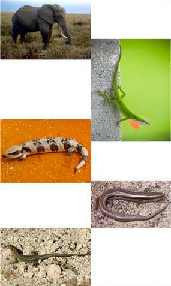 A retrotransposon was transferred at least nine times, providing a major component to the genomes of some ruminants, marsupials, squamates, monotremes and African mammals, according to biologists from Adelaide, Australia. They even identify reptile ticks as likely vectors for some transfers. (Five recipient species are pictured at right.)
A retrotransposon was transferred at least nine times, providing a major component to the genomes of some ruminants, marsupials, squamates, monotremes and African mammals, according to biologists from Adelaide, Australia. They even identify reptile ticks as likely vectors for some transfers. (Five recipient species are pictured at right.)
The subject retrotransposon is designated BovB, a long interspersed element (LINE) of about 3,200 nucleotides. LINEs are a class of Transposable Elements (TEs) known to copy and paste themselves widely within genomes, often with profound evolutionary effects. However, extracellular TEs are not viable, so they require vectors such as parasites or viruses to horizontally transfer (HT) them among species.
HT of retrotransposons is significant because conservative estimates of their prevalence indicate that they make up between a third and a half of typical vertebrate genomes. Thus, demonstration of widespread HT for retrotransposons has significant implications for our understanding of genome structure and evolution. ...The frequent horizontal movement of BovB illustrates the significant impact HT has had on animal genomes; expansion of BovB in various lineages has contributed large amounts of sequence (and presumably structural variation) to the genomes of distantly related species. It is tempting to speculate that BovB is not the only retrotransposon to have jumped between species....
 Ali Morton Walsha et al., "Widespread horizontal transfer of retrotransposons" [abstract], doi:10.1073/pnas.1205856110, Proc. Natl. Acad. Sci. USA, online 31 Dec 2012. Ali Morton Walsha et al., "Widespread horizontal transfer of retrotransposons" [abstract], doi:10.1073/pnas.1205856110, Proc. Natl. Acad. Sci. USA, online 31 Dec 2012.
 How a quarter of the cow genome came from snakes by Ed Yong, NationalGeographic.com, 1 Jan 2013. How a quarter of the cow genome came from snakes by Ed Yong, NationalGeographic.com, 1 Jan 2013.
 DNA Jumps Between Vertebrates by Dan Cossins, TheScientist, 3 Jan 2013. DNA Jumps Between Vertebrates by Dan Cossins, TheScientist, 3 Jan 2013.
 Viruses and Other Gene Transfer Mechanisms is a related local webpage — What'sNEW about HGT Viruses and Other Gene Transfer Mechanisms is a related local webpage — What'sNEW about HGT  | |
 Thanks for an alert, Stan Franklin. Thanks for an alert, Stan Franklin.
|
 The world is beginning to notice the evidence for life in the Polonnaruwa meteorite. The latest paper about it is now posted on arxiv.com. Students and other bloggers are commenting furiously (see typical blogs linked below.) Many of their complaints deal with who the scientists are and where they have published the evidence, and not the actual evidence. Too bad. But at least people are taking notice.
The world is beginning to notice the evidence for life in the Polonnaruwa meteorite. The latest paper about it is now posted on arxiv.com. Students and other bloggers are commenting furiously (see typical blogs linked below.) Many of their complaints deal with who the scientists are and where they have published the evidence, and not the actual evidence. Too bad. But at least people are taking notice.
 Chemical analysis of apparent biological fossils in the Polonnaruwa meteorite, and a measurement of the oxygen isotopes in it are now available. The accompanying photo from the linked article shows a detail of a highly carbonaceous embedded fossilized filament of a likely cyanobacteria. It is attached to a complex, thick-walled, kerogenous microfossil tentatively identified as a hystrichosphere, "thought to be associated with the resting stages of a group of largely extinct marine dinoflagellate algae." Additional photos in the linked article and earlier ones also show fossilized diatoms in samples of Polonnaruwa.
Chemical analysis of apparent biological fossils in the Polonnaruwa meteorite, and a measurement of the oxygen isotopes in it are now available. The accompanying photo from the linked article shows a detail of a highly carbonaceous embedded fossilized filament of a likely cyanobacteria. It is attached to a complex, thick-walled, kerogenous microfossil tentatively identified as a hystrichosphere, "thought to be associated with the resting stages of a group of largely extinct marine dinoflagellate algae." Additional photos in the linked article and earlier ones also show fossilized diatoms in samples of Polonnaruwa. A fragment gathered in Sri Lanka after the fall of the Polonnaruwa meteorite has unearthly isotope ratios, according to an analysis performed at the University of Göttingen last week. The figure shows the Δ17O / Δ18O fractionation range for this sample (POL), along with those of achondritic stony meteorites (EFL), Meta-C chondrites (MC), Mars meteorites (MFL) and ordinary chondrites (CI). This information should help to dispense the objection that Polonnaruwa was not a meteorite. A paper to accompany the isotope analysis is forthcoming. (Polonnaruwa fell on 29 December 2012. The diatoms it contains are clearly biological. Please stay tuned!)
A fragment gathered in Sri Lanka after the fall of the Polonnaruwa meteorite has unearthly isotope ratios, according to an analysis performed at the University of Göttingen last week. The figure shows the Δ17O / Δ18O fractionation range for this sample (POL), along with those of achondritic stony meteorites (EFL), Meta-C chondrites (MC), Mars meteorites (MFL) and ordinary chondrites (CI). This information should help to dispense the objection that Polonnaruwa was not a meteorite. A paper to accompany the isotope analysis is forthcoming. (Polonnaruwa fell on 29 December 2012. The diatoms it contains are clearly biological. Please stay tuned!)

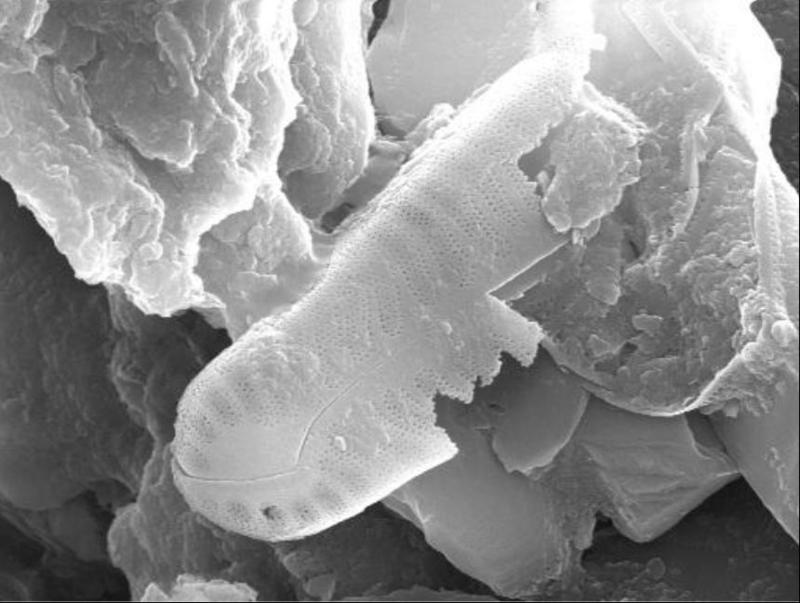
 Many of our genes have no obvious relatives or evolutionary history. So where did they come from? These are the opening sentences of a review by Helen Pilcher about "orphan genes," the ones that seem to have come from nowhere. When they were first noticed, they were considered anomalies whose provenance would become apparent as more genomes were sequenced. That has not happened. The number of them has continued to grow, and they comprise about a third of all genes, even now. Everyone assumed that as we learned more, we would discover what had happened to their families. But we haven't – quite the opposite, in fact.... As the genomes of more and more organisms were sequenced, genetic family reunions proved to be the exception rather than the rule.
Many of our genes have no obvious relatives or evolutionary history. So where did they come from? These are the opening sentences of a review by Helen Pilcher about "orphan genes," the ones that seem to have come from nowhere. When they were first noticed, they were considered anomalies whose provenance would become apparent as more genomes were sequenced. That has not happened. The number of them has continued to grow, and they comprise about a third of all genes, even now. Everyone assumed that as we learned more, we would discover what had happened to their families. But we haven't – quite the opposite, in fact.... As the genomes of more and more organisms were sequenced, genetic family reunions proved to be the exception rather than the rule.
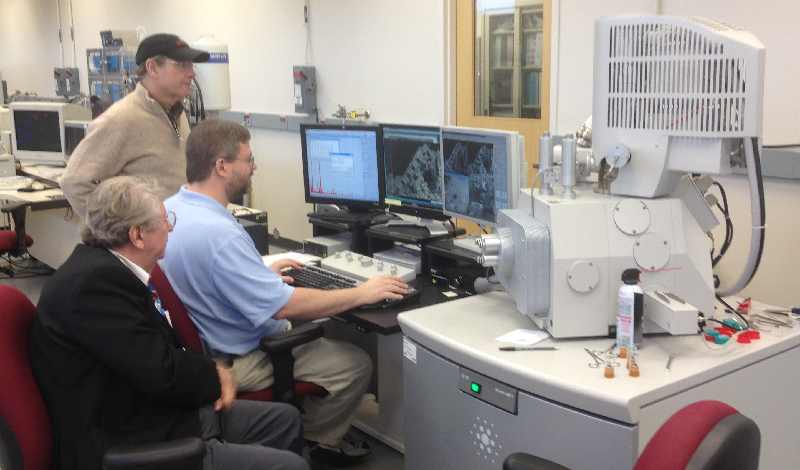
 More about the Polonnaruwa meteorite: Among many surprises, it is even more porous than ordinary carbonaceous meteorites. Although diatoms in meteorites are still controversial, Hoyle and Wickramasinghe saw evidence for silicates in interstellar dust thirty years ago.
Wickramasinghe et al. conclude, If this result is confirmed in future studies and contamination is excluded, the meteorite would have been shown to contain both fossil as well as living microbes [right], and panspermia thus demonstrated in real time. (Contamination has been excluded for the fossilized, not the living diatoms.)
More about the Polonnaruwa meteorite: Among many surprises, it is even more porous than ordinary carbonaceous meteorites. Although diatoms in meteorites are still controversial, Hoyle and Wickramasinghe saw evidence for silicates in interstellar dust thirty years ago.
Wickramasinghe et al. conclude, If this result is confirmed in future studies and contamination is excluded, the meteorite would have been shown to contain both fossil as well as living microbes [right], and panspermia thus demonstrated in real time. (Contamination has been excluded for the fossilized, not the living diatoms.)
 A retrotransposon was transferred at least nine times, providing a major component to the genomes of some ruminants, marsupials, squamates, monotremes and African mammals, according to biologists from Adelaide, Australia. They even identify reptile ticks as likely vectors for some transfers. (Five recipient species are pictured at right.)
A retrotransposon was transferred at least nine times, providing a major component to the genomes of some ruminants, marsupials, squamates, monotremes and African mammals, according to biologists from Adelaide, Australia. They even identify reptile ticks as likely vectors for some transfers. (Five recipient species are pictured at right.)
